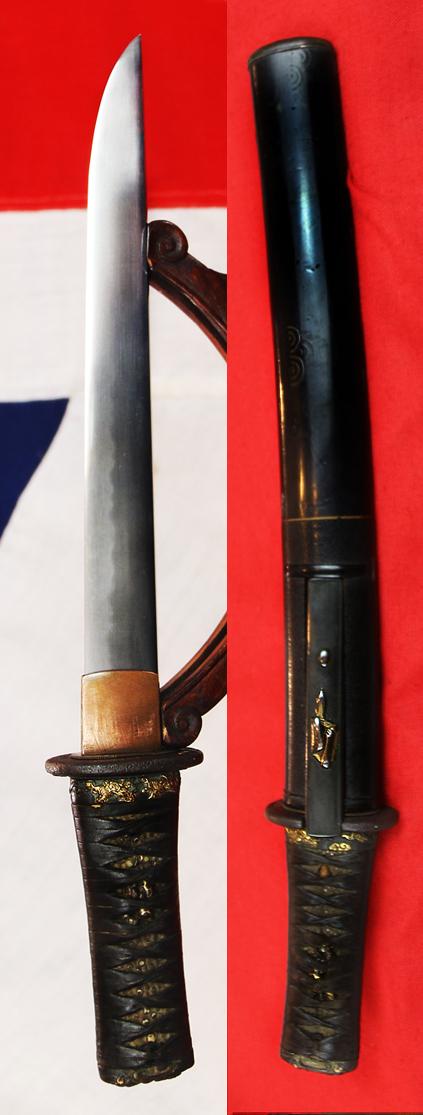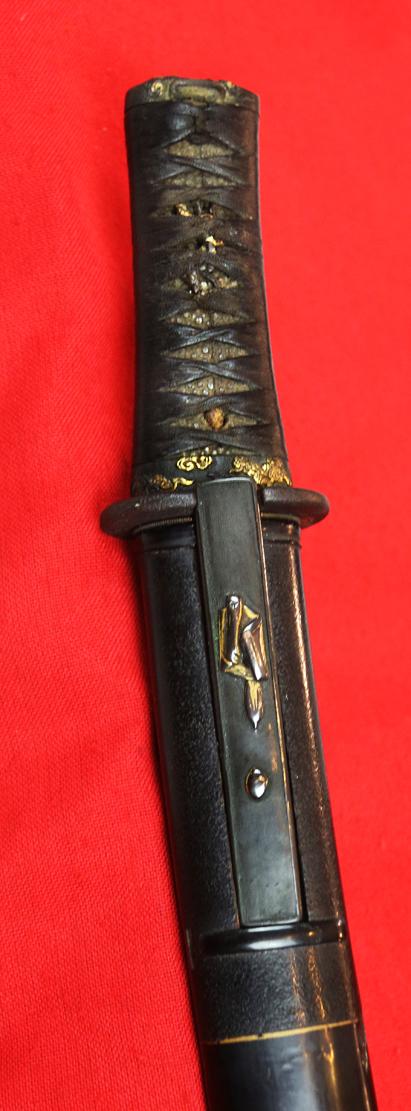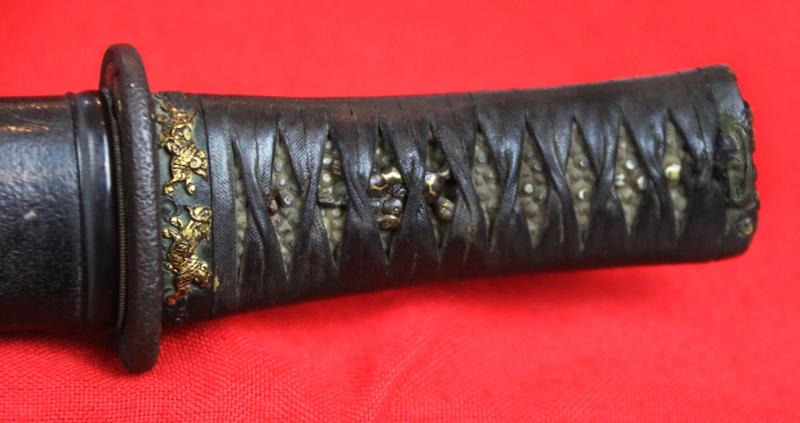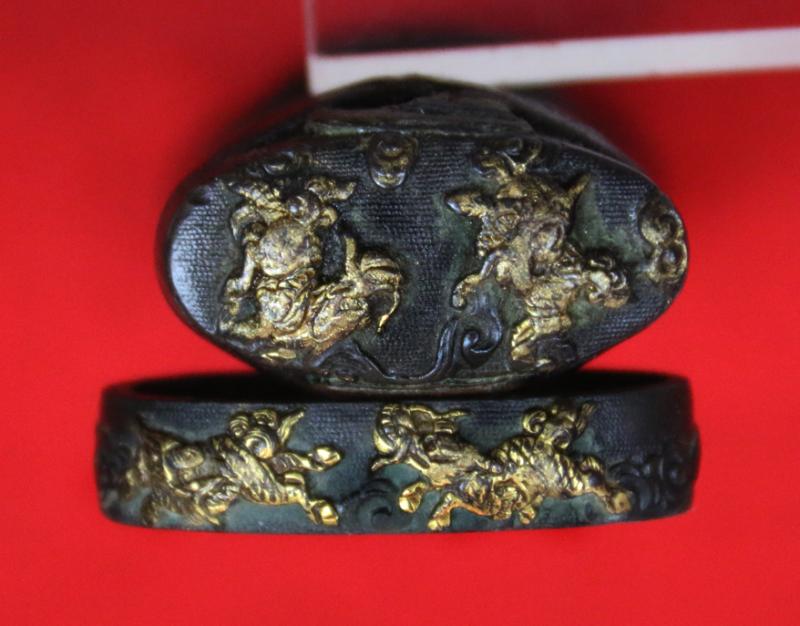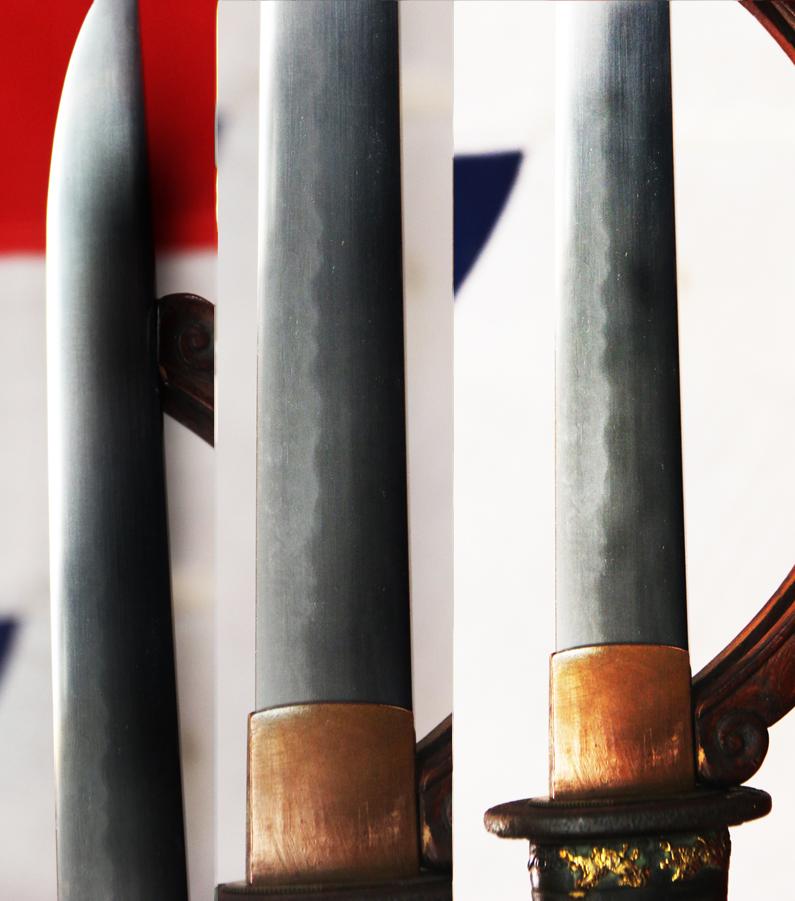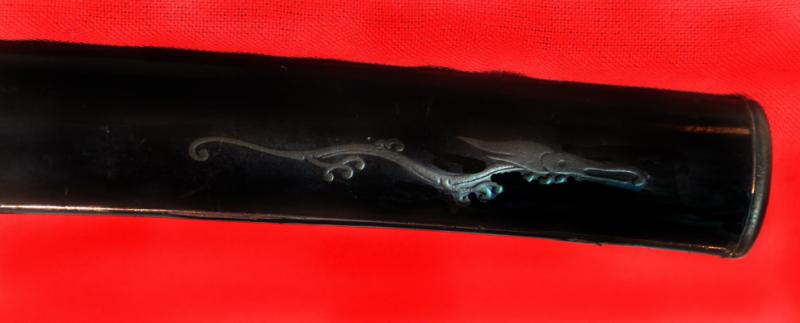A Beautiful Samurai Shinto Kirin Based Tanto Fabulous Signed Blade by Echizen Ju Yasutsugu
With an armour or even helmet piercing blade. The whole tanto is completely remarkable in that it is likely to have been completely untouched since the day it was made, it has all its original fittings from the Edo period including the tsukaito wrap on the hilt and the lacquer on the saya, the Saya is decorated with a stylised Kilin to match the fittings, the blade is stunning and shows fabulous deep choji hamon, this is a truly exceptional tanto,
The blade is extra thick at the base and shows its penetrating qualities and ability to cut through metal armour or even the iron plates of a helmet, this is a beautiful and remarkable tanto. The fuchigashira mounts are pure gold over shakudo of Kirin or Qilin, in deep takebori relief carving. The menuki are also Kirin, of shakedown inlaid with swirls of pure gold. The Kirin in Japanese, qilin (in Chinese: 麒麟; pinyin: qílín) is a mythical hooved chimerical creature known in Chinese and other East Asian cultures, said to appear with the imminent arrival or passing of a sage or illustrious ruler. It is a good omen thought to occasion prosperity or serenity. It is often depicted with what looks like fire all over its body. It is sometimes called the “Chinese unicorn” when compared with the Western unicorn. The Japanese kirin looked more like the Sin-you lion-like beast. Some later Japanese netsuke portray a Kirin that has wings that look like the Central Asian winged horse with horns or the Sphinx. Or they become increasingly dragon-like like Chinese Qilins.
The Kirin / Qilin can sometimes be depicted as having a single horn as in the Western tradition, or as having two horns. In modern Chinese the word for “unicorn” is 独角兽 “du jiao shou”, and a Qilin that is depicted as a unicorn, or 1-horned, is called “Du jiao Qilin” 独角麒麟 meaning “1-horned Qilin” or “Unicorn Qilin”. However, there are several kinds of Chinese mythical creatures which also are unicorns, not just Qilin. Qilin generally have Chinese dragon-like features.
Most notably their heads, eyes with thick eyelashes, manes that always flow upward and beards. The bodies are fully or partially scaled, though often shaped like an ox, deer or horse’s, and always with cloven hooves. In modern times, the depictions of Qilin have often fused with the Western concept of unicorns.
In legend, the Qilin became dragon-like and then tiger-like after their disappearance in East Asia and finally a stylised representation of the giraffe in Ming Dynasty. The identification of the Qilin with giraffes began after Zheng's voyage to East Africa according to recent scholarship. The modern Japanese word for giraffe is also kirin, which bears the same derived ideas. Shakudo is a billon of gold and copper (typically 4-10% gold, 96-90% copper) which can be treated to form an indigo/black patina resembling lacquer. Unpatinated shakudo Visually resembles bronze; the dark color is induced by applying and heating rokusho, a special patination formula.
Shakudo Was historically used in Japan to construct or decorate katana fittings such as tsuba, menuki, and kozuka; as well as other small ornaments. When it was introduced to the West in the mid-19th century, it was thought to be previously unknown outside Asia, but recent studies have suggested close similarities to certain decorative alloys used in ancient Egypt, Greece, and Rome.
Code: 24942
4995.00 GBP

